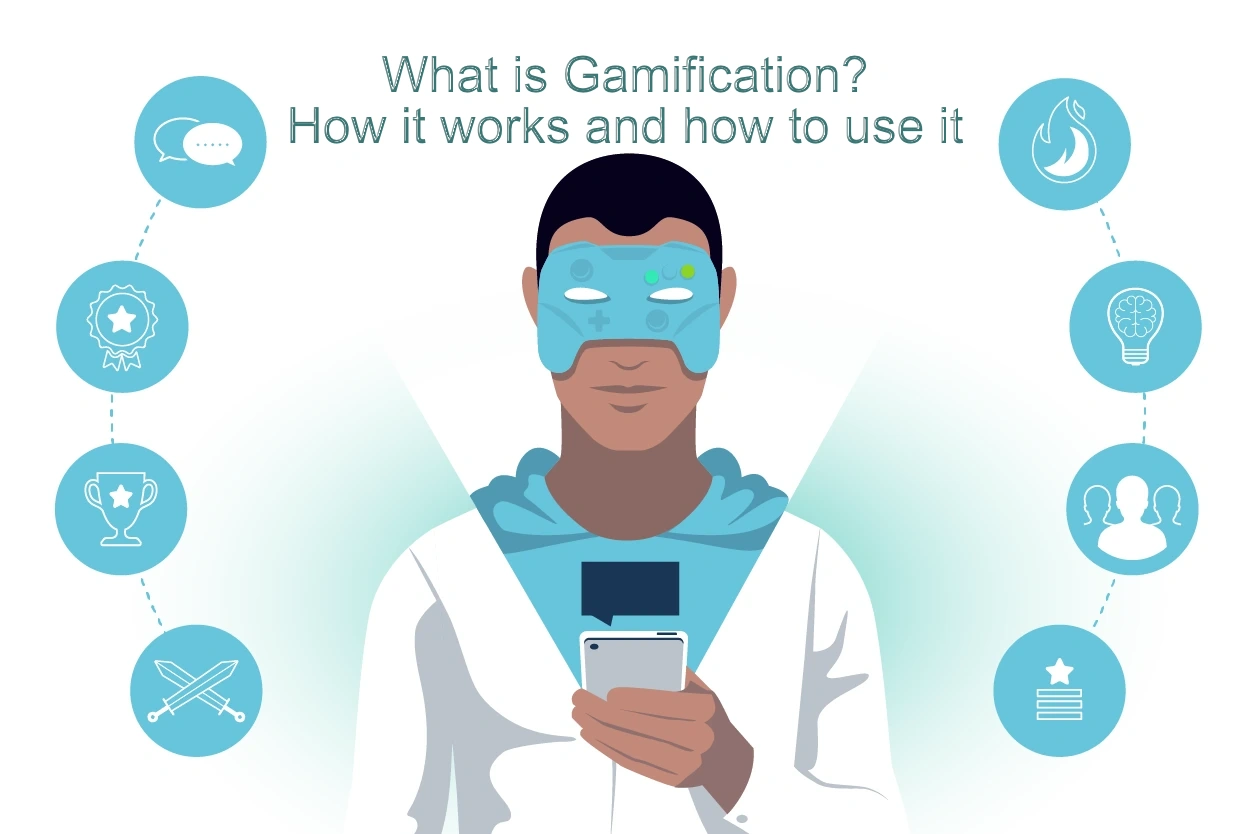Gamification means adding game-like features to everyday tasks to make them more fun and motivating. It works by using points, rewards, and challenges to keep people engaged. You can use it in learning, work, fitness, or daily habits to reach goals more easily.
Examples of Gamification in Daily Life
- Fitness apps: Giving badges for completing workouts
- Language learning apps: Earning points for practicing every day
- Workplace: Leaderboards showing top performers
- Online education: Leveling up after completing courses
Why Gamification Works

Gamification taps into basic human psychology. People enjoy being rewarded and recognized. When tasks feel like challenges or games, people tend to work harder and stick with them longer.
| Game Element | Effect on User |
|---|---|
| Points | Show progress |
| Badges | Recognize achievements |
| Leaderboards | Encourage competition |
| Levels | Keep users coming back |
| Challenges | Make tasks interesting |
How Gamification Can Help Different Areas
Gamification is not just for games. It can help many industries like education, health, business, and more.
In Education
Gamification makes learning less boring. Students stay more interested when they earn points, unlock new levels, or get badges.
Tips for Teachers:
- Use quizzes with points
- Offer digital rewards for homework
- Show progress through levels or badges
Example: A math teacher uses an app where students collect stars to solve problems correctly.
In Business
Companies use gamification to keep workers motivated and to train them in a fun way.
Tips for Managers:
- Set goals with small rewards
- Use team leaderboards
- Give badges for meeting deadlines
Example: A sales team uses an app that tracks who made the most calls and shows results in a fun dashboard.
In Health and Fitness
People are more likely to stay active when they can track progress and earn rewards.
Tips for Users:
- Use apps with daily streaks
- Join fitness challenges with friends
- Set personal milestones with badges
Example: A walking app gives you a digital medal after you walk 10,000 steps a day for a week.
Simple Ways to Add Gamification to Your Life

Gamification doesn’t require building an app. It can be easily integrated into daily life.
At Home
- Use a chore chart with points and rewards
- Make a reading challenge with levels
- Give yourself stars for eating healthy meals
At Work
- Track goals and give yourself a score
- Create a “focus timer” with streaks
- Celebrate completed tasks with small rewards
For Personal Goals
- Keep a habit tracker
- Earn digital badges when you reach goals
- Compete with friends on shared goals
| Task Type | Gamification Method |
| Cleaning | Point system and rewards |
| Studying | Levels and badges |
| Healthy Eating | Stars and challenges |
Common Mistakes to Avoid
While gamification is useful, it needs to be done right. Otherwise, it can feel forced or annoying.
Mistakes and How to Avoid Them
| Mistake | What Happens | Better Way |
| Too many rewards | Users stop caring | Keep rewards meaningful |
| No clear goal | People feel lost | Set simple, clear tasks |
| Competition only | Not fun for everyone | Include team-based rewards |
| Over-complicated rules | Users give up | Keep it simple |
Expert Insight: Dr. Kevin Werbach, a gamification expert from Wharton School, says, “Gamification works best when it’s aligned with real goals. It should help users grow, not just play.”
Real-Life Case Studies
Here are some cases where gamification helped in real settings:
Duolingo (Language Learning)
- Uses streaks, points, and leaderboards
- Keeps users coming back every day
- Makes learning fun and addictive
Starbucks Rewards App
- Earn stars for purchases
- Get free drinks and special offers
- Encourages repeat customers
Khan Academy (Education)
- Students earn badges for completing lessons
- Teachers can track progress easily
- Makes learning more exciting
Final Thoughts
Gamification is more than just fun. It helps people stay on track, reach their goals, and feel good about their progress. It can turn boring or hard tasks into something you look forward to doing.
If you want to try gamification, start small. Pick one goal, set a reward, and track your progress in a fun way. The more you enjoy the process, the more likely you are to stick with it.
In short, gamification is about turning tasks into games, but games that help you grow and improve.











Leave a reply